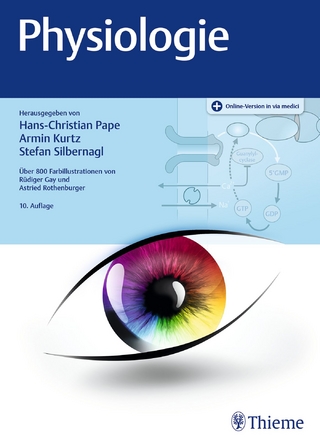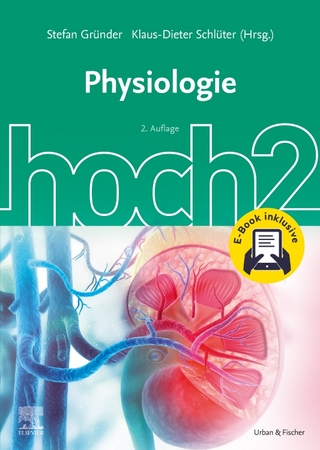
Reliability in Biomechanics
ISTE Ltd and John Wiley & Sons Inc (Verlag)
978-1-78630-024-9 (ISBN)
In this book, the authors present in detail several recent methodologies and algorithms that we have developed during the last fifteen years. The deterministic methods account for uncertainties through empirical safety factors, which implies that the actual uncertainties in materials, geometry and loading are not truly considered. This problem becomes much more complicated when considering biomechanical applications where a number of uncertainties are encountered in the design of prosthesis systems. This book implements improved numerical strategies and algorithms that can be applied only in biomechanical studies.
Ghias KHARMANDA, Associate Professor (HDR Europ. Dr Eng). Dr. Abdelkhalak EL HAMI, Laboratoire d'Optimisation et Fiabilité en Mécanique des Structures, LOFIMS, INSA de Rouen, France;
Preface ix
Introduction xi
Chapter 1. Basic Tools for Reliability Analysis 1
1.1. Introduction 1
1.2. Advantages of numerical simulation and optimization 2
1.3. Numerical simulation by finite elements 3
1.3.1. Use 3
1.3.2. Principle 4
1.3.3. General approach 5
1.4. Optimization process 6
1.4.1. Basic concepts 7
1.4.2. Problem classification 10
1.4.3. Optimization methods 22
1.4.4. Unconstrained methods 23
1.4.5. Constrained methods 43
1.5. Sensitivity analysis 56
1.5.1. Importance of sensitivity 56
1.5.2. Sensitivity methods 57
1.6. Conclusion 61
Chapter 2. Reliability Concept 63
2.1. Introduction 63
2.1.1. Preamble 63
2.1.2. Reliability history 63
2.1.3. Reliability definition 65
2.1.4. Importance of reliability 66
2.2. Basic functions and concepts for reliability analysis 66
2.2.1. Failure concept 67
2.2.2. Uncertainty concept 67
2.2.3. Random variables 68
2.2.4. Probability density function 69
2.2.5. Cumulative distribution function 69
2.2.6. Reliability function 70
2.3. System reliability 71
2.3.1. Series conjunction 71
2.3.2. Parallel conjunction 72
2.3.3. Mixed conjunction 73
2.3.4. Delta-star conjunction 74
2.4. Statistical measures 77
2.5. Probability distributions 81
2.5.1. Uniform distribution 82
2.5.2. Normal distribution 86
2.5.3. Lognormal distribution 91
2.6. Reliability analysis 97
2.6.1. Definitions 97
2.6.2. Algorithms 105
2.6.3. Reliability analysis methods 106
2.6.4. Optimality criteria 110
2.7. Conclusion 112
Chapter 3. Integration of Reliability Concept into Biomechanics 113
3.1. Introduction 113
3.2. Origin and categories of uncertainties 115
3.3. Uncertainties in biomechanics 116
3.3.1. Uncertainty in loading 117
3.3.2. Uncertainty in geometry 118
3.3.3. Uncertainty in materials 118
3.4. Bone-related uncertainty 119
3.4.1. Bone behavior law 120
3.4.2. Contribution to the characterization of the bone’s mechanical properties 125
3.5. Bone developments and formulations 126
3.5.1. Current formulation 126
3.5.2. Generalized formulation 127
3.5.3. Optimized formulation 128
3.5.4. Extension to orthotropic behavior formulation 130
3.6. Characterization by experimentation of the bone’s mechanical properties 133
3.6.1. Characterization by bending test 134
3.6.2. Characterization by compression test 135
3.7. Conclusion 136
Chapter 4. Reliability Analysis of Orthopedic Prostheses 137
4.1. Introduction to orthopedic prostheses 137
4.1.1. History of prostheses 139
4.1.2. Evolution of prostheses 139
4.1.3. Examples of orthopedic prostheses 140
4.2. Reliability analysis of the intervertebral disk 140
4.2.1. Functional anatomy 140
4.2.2. The lumbar functional spinal unit 141
4.2.3. Intervertebral disk prosthesis 145
4.2.4. Numerical application on the intervertebral disk 147
4.3. Reliability analysis of the hip prosthesis 154
4.3.1. Anatomy 154
4.3.2. Presentation of the total hip prosthesis 158
4.3.3. Numerical application of the hip prosthesis 161
4.3.4. Boundary conditions 164
4.3.5. Direct simulation 164
4.3.6. Probabilistic sensitivity analysis 166
4.3.7. Integration of reliability analysis 167
4.4. Conclusion 173
Chapter 5. Reliability Analysis of Orthodontic Prostheses 175
5.1. Introduction to orthodontic prostheses 175
5.2. Anatomy of the temporomandibular joint 176
5.2.1. Articular bone regions and meniscus 177
5.2.2. Ligaments 179
5.2.3. Myology, elevator muscles and depressor muscles 179
5.3. Numerical simulation of a non-fractured mandible 183
5.3.1. Description of the studied mandible 183
5.3.2. Numerical results 185
5.4. Reliability analysis of the fixation system of the fractured mandible 188
5.4.1. Description of a fractured mandible 188
5.4.2. Fixation strategy using mini-plates 189
5.4.3. Study of a homogeneous and isotropic structure 190
5.4.4. Study of a composite and orthotropic structure 198
5.4.5. Result discussion 207
5.5. Conclusion 208
Appendices 209
Appendix 1: Matrix Calculation 211
Appendix 2: ANSYS Code for the Disk Implant 217
Appendix 3: ANSYS Code for the Stem Implant 221
Appendix 4: Probability of Failure/Reliability Index 235
Bibliography 237
Index 245
| Erscheinungsdatum | 18.11.2016 |
|---|---|
| Verlagsort | London |
| Sprache | englisch |
| Maße | 165 x 241 mm |
| Gewicht | 544 g |
| Themenwelt | Studium ► 1. Studienabschnitt (Vorklinik) ► Physiologie |
| Technik ► Maschinenbau | |
| Technik ► Umwelttechnik / Biotechnologie | |
| ISBN-10 | 1-78630-024-9 / 1786300249 |
| ISBN-13 | 978-1-78630-024-9 / 9781786300249 |
| Zustand | Neuware |
| Haben Sie eine Frage zum Produkt? |
aus dem Bereich


